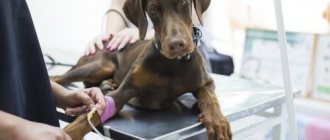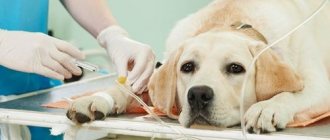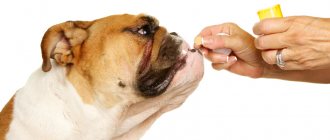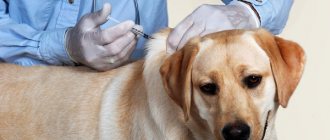Infusion therapy (or the administration of drugs and blood to a patient using a drip system) is recognized as one of the effective methods of treatment. A dropper is a medical device with which a fairly large volume of liquid is introduced into the individual’s body. One end of it is connected to a bottle or bag containing medicine or blood, and the other to the patient’s vein. The following types of systems are distinguished:
- a dropper for blood transfusion (or abbreviated as PC);
- for transfusion of solutions - PR.
IV catheters
These medical devices are used to introduce drugs into the bloodstream over a long period. A catheter is a small hollow tube that is inserted into a vein in different parts of the body (arms, head, collarbone). With its help, injury to the vein is eliminated. Installation is carried out in stationary conditions. There are several types of catheters for IVs:
- Butterfly system. This medical product is a needle with plastic wings at the base. Their purpose is to attach the catheter to the patient’s skin. The advantage of such a system is its ease of use and installation. The disadvantages include the fact that the needle is constantly in the vein, exposing it to injury if moved carelessly. The product is used quite often in cases of single administration of drugs, which takes no more than two hours.
- For peripheral veins. This type is intended for long-term use. The product is made of thin plastic. The needle is used only to puncture the vein and insert the catheter. One of the advantages is that the patient does not experience any inconvenience in the future, since the product itself is made of flexible plastic material. The catheter is changed after three days.
- For central veins. This system for insertion into the subclavian vein consists of a guidewire, a catheter and a set of needles. Designed for administering drugs into the bloodstream over a long period and is used in cardiac surgery, oncology, and intensive care. The installation of such a catheter is considered a minor surgical intervention and is performed by a resuscitation doctor in a medical organization. This manipulation is accompanied by a large number of complications, so peripheral veins are often used to administer medications. The system is introduced into the peripheral vein and then pulled into the central vein. In this case, the likelihood of complications is reduced.
Regardless of the type of catheter, its size matters. Products are marked according to color depending on this parameter:
- Orange. This color indicates thick catheters intended for viscous solutions and blood components.
- Violet. This tone is used for the thinnest products that are used for infusion of solutions.
Intravenous injection: execution algorithm, rules, complications
Indications and puncture sites
Intravenous jet administration of medicinal substances is carried out once or as a course of treatment:
- when providing emergency care
- if it is necessary to quickly introduce the drug into the bloodstream
Indications for intravenous injections are determined solely by the doctor. A nurse performs a procedure as prescribed by a doctor.
To administer the drug into the venous lumen, venipuncture is necessary (from the Latin vena -
vein,
punctio -
to prick). It is easier to puncture well-defined veins. Places where veins are close to the skin:
- elbow bends
- back of the hand
- forearm
- temporal veins - in newborns
Intravenous injection: preparation for the procedure
Before the injection, preparation is carried out:
- patient
- medical worker
- workspace
Patient preparation
The nurse must introduce herself to the patient, explain to him that the doctor has prescribed a procedure, and obtain consent to perform it. The patient should be asked about a history of allergic reactions and experience with such manipulations. You should also find out how long ago the patient ate food.
Most drugs cannot be administered intravenously on an empty stomach. In some situations, on the contrary, you should not eat food before the injection. The patient must consent to the medical intervention “intravenous injection”.
Nurse training
The nurse checks that all equipment necessary for the intravenous injection is present. Instruments, medicines, consumables, disinfection solutions - everything should be checked for availability and expiration dates.
The health worker washes his hands hygienically and dries them with a disposable towel. Then, with clean hands, put on a mask, goggles, and an oilcloth or plastic apron. The skin of the hands is treated with a skin antiseptic. You should wait until your hands are dry, then put on non-sterile gloves.
Preparing your workspace
To carry out the procedure you will need:
- Hand washing soap
- Skin hand sanitizer
- Manipulation table
- Couch
- Chair for intravenous manipulation. If it is not available, use a pillow to place under the elbow or other injection site.
- Sterile tray for syringe with medicine
- Non-sterile waste tray
- Scissors or tweezers (non-sterile) for opening bottles
- File for opening the ampoule
- Alcohol wipes or sterile cotton balls + antiseptic for treating ampoules, vials and the patient’s skin (70% alcohol or other)
- Non-sterile gloves
- Sterile gloves
- Container for collecting sharps waste class B
- Containers for collecting waste of classes A and B
Take a bottle or ampoule with the medicine, check the expiration date, check the name with the doctor’s prescription, make sure there is no external damage, and evaluate the transparency of the solution.
Take a syringe of the required volume with a needle of sufficient length and thickness, check the expiration date and integrity of the packaging, and open the syringe.
When taking the drug from an ampoule : check the name, appearance, dosage and expiration date of the drug. Shake the ampoule so that the solution is in its widest part, file the neck, wipe the neck with an antiseptic napkin, break the neck, and draw the drug.
When taking a medicine from a bottle : check the name, appearance, dosage and expiration date of the medicine. Using scissors or tweezers, bend the part of the cap that covers the rubber stopper, wipe the stopper with an antiseptic napkin, place the needle through the stopper into the bottle at an angle of 90 degrees so that the cut is inside the bottle. Turn the bottle upside down and draw the solution into the syringe.
For intravenous injection, the active drug substance is most often used in small quantities (on average from 1 to 10 ml) and saline solution for dilution. The dosage of both the main active ingredient and the dilution solution is determined by the doctor.
Replace the syringe needle with a sterile one, release the air from the syringe without removing the cap from the needle, and place the syringe in a sterile tray. Place wipes for treating the injection field in the same tray.
If the patient has only small visible veins, as well as for children, a butterfly needle of various sizes is used - from 21G to 27G.
Intravenous injection: procedure algorithm:
- Invite the patient to take a comfortable position lying on a couch or bed in the ward.
- Remove non-sterile gloves and place them in a Class B waste container.
- Treat the skin of your hands with an antiseptic.
- Wear sterile gloves for intravenous injection.
- Select a specific venipuncture site. Inspect and palpate it for signs of inflammation, damage, and infiltration. If any, change the injection site and inform your doctor.
- Apply a tourniquet to the patient above the injection site. In case of puncture of the ulnar (cubital) vein - on the middle third of the shoulder. The tourniquet is not applied to the skin, but over clothing or a diaper. In this case, a pulse should be palpable in the nearest artery.
- When injecting into the cubital vein, the patient extends the arm at the elbow joint as much as possible. For this purpose, a special pillow is placed up to the elbow.
- Ask the patient to clench and unclench his fist several times. To facilitate this action, small rubber balls are used. The patient squeezes the ball, then opens his palm - this happens several times.
- Immediately before venipuncture, ask the patient to clench his fist and hold it in this position.
- Inspect and palpate the vein that will be punctured.
- Treat the skin at the site of the proposed venipuncture with sterile wipes with an antiseptic. A minimum of 2 napkins are used, more if necessary. The skin is rubbed from the center to the periphery in a circular motion. The first napkin is a vast field with an area of about 20*10 cm. The second napkin is the immediate site of venipuncture with an area of about 3*3 cm.
How to install the system (drip)?
To set it up correctly, you need to do a little preparatory work, which will consist of the following:
- Place a drip stand next to the patient, which is a stand on which the bag with the infused solution will be attached.
- Wash your wrists and hands thoroughly with soap, not forgetting the areas between the fingers. Next, they need to be blotted dry rather than wiped. Or you can use any antiseptic intended for hand treatment.
- Check the name of the drug prepared for administration with the prescription of the treating doctor.
- Prepare the system, needle, tourniquet, fixation patch, cotton or gauze swab, alcohol solution of chlorhexidine for sterilization.
- In the package with the medicine, find the connection point to which the system will be connected and wipe it with a swab soaked in an alcohol solution.
- Attach the dropper and the bag, hang it on the stand.
- Remove all bubbles.
- Wear gloves.
- Approach the patient.
Now proceeds directly to setting up the IV:
- Bandage your hand with a tourniquet over the puncture site.
- Disinfect the injection site.
- Install a catheter, which is a small tube that is inserted along with the needle, and after it is removed remains in the vein. Place it at an angle of 30 degrees to the patient's arm. Next, remove the needle and remove the tourniquet. Wipe the area where the catheter is attached with an alcohol solution.
- Attach the IV tube to the catheter, securing it with a bandage.
- Adjust the speed of drug administration using a special wheel-clamp installed on the system.
Assembling and placing an IV in a dog - step-by-step instructions
- We treat our hands with antiseptic and put on gloves, which we also disinfect.
- Open the system and the bottle with the solution. Do not remove the entire metal cap from the bottle, only the central part.
- We insert 2 intake needles into the rubber cap and fix the bottle with the bottom up. When installing a drip at home, use the means at hand to hang the container - tape, electrical tape, a mop handle. The main thing is to securely fasten the bottle at a height of 45–50 cm above the animal.
Note! Using a disposable bag with handles, it is quite possible to build a “cradle” for a bottle of medicine. We cut a small hole in the bottom of the bag (so that the neck of the container can fit through), tie the handles tightly and use the resulting loops to hang the dropper on a trempel, hook or nail.
- Move the dispenser lever all the way, squeezing the tube.
- We make several smooth pressures on the reservoir with the filter, under pressure, it will draw the medicine into itself. Tap with your finger and shake the chamber slightly to release excess oxygen.
- Lower the dispenser lever slightly, watch the liquid, it should drop to the needle.
Important! There must be no air bubbles in the tube below the filter tank!
- Close the dispenser and start cooking the dog.
The optimal place for infusion is the wide veins on the front legs. Trim or shave the hair between the wrist and elbow. Tighten the paw with a tourniquet above the area where the puncture will occur. Most often, veins are clearly visible in dogs. We do not remove the tourniquet until the needle is inserted.
Consequences of air entering a vein
Blockage of a vein can be caused by an air bubble that gets into it when administering drugs intravenously with a syringe or using a dropper. The air bubble disrupts blood microcirculation, blocking the lumen of the vessel, i.e., an embolism develops.
This is especially dangerous when large arteries are blocked and, accordingly, a large volume of air penetrates. Immediately before inserting the IV, the air in the system is released, so the likelihood of air entering the vein is negligible. To avoid complications and not be afraid of intravenous drips, you should entrust these manipulations to experienced medical professionals.
How to do it right
If intravenous injections are prescribed, the algorithm for their administration must be followed in all respects. Violation of the rules will lead to adverse reactions, damage to skin tissue, subcutaneous fat, and vascular endothelium. There is also a risk of infection with a high likelihood of developing sepsis.
It is recommended that the nurse or doctor inject the drug intravenously. You can give the injection yourself, but there is a high risk of tissue damage. Therefore, it is first recommended to take a course on administering medications by injection, and only then give injections into a vein.
Jet infusion
You can inject the drug into a jet to yourself, but the person must give the injection correctly, having studied the algorithm for carrying out the manipulation.
If you have no experience in performing injections, it is better to consult a nurse.
Injection
For intravenous injection, the technique involves several stages:
What do you think are the most important factors when choosing a medical facility?
- Tool preparation. It is necessary to put 2 trays: in one - sterile instruments, in the other - used materials.
- Wash your hands thoroughly with bactericidal soap, use gloves (inject only under sterile conditions).
- Choose a place to puncture the vein. Most often this is the ulnar fossa, the hand. If the cubital fossa is selected, place a tourniquet on the forearm. The patient must work with his fist.
- Open the ampoules and packaging with a disposable syringe.
- Take the medicine from the ampoule. To do this, draw the required amount of product into the syringe and turn it vertically with the needle up. Lightly tap the syringe so that all air bubbles come out. Press the piston until a stream of medicine appears. This prevents the passage of air bubbles into the vein and further embolization of the vessels.
- First, sterilize the surface of the skin generously, then only in the area of the puncture.
- Slowly insert the needle into the vein at an angle of 15° with the cut up. Pull up the syringe slightly until blood appears in the barrel. This one indicates that the needle has entered a vein.
- The needle is inserted to a depth of no more than 1 cm, since there is a risk of puncturing the vessel through the back wall.
- Remove the tourniquet and slowly inject the medicine. Part of it may not be injected and may remain in the syringe.
- Remove the syringe and apply a cotton swab soaked in alcohol to the puncture area. Squeeze your elbow to restore blood flow. You can apply a cold compress to completely prevent the formation of a hematoma.
Classes on intravenous injection techniques at medical courses will help you easily learn how to give injections yourself without outside help.
Drip administration
It is inconvenient to administer an IV to yourself, since the rate at which the drug enters the bloodstream must be regulated. Droppers can be placed at home if the patient invites a medical specialist to visit the home and is unable to visit a medical facility.
The preparatory stage follows the same steps as the injection. After the skin is punctured and the needle is inserted, it is fixed with a bandage so that it does not jump out.
There is a regulator on the dropper, which is set at the appropriate rate at which the drug enters the circulatory system.
The patient is monitored by a doctor, as there is a risk of a sudden deterioration in health and first aid may be required.
Through a catheter in a vein of the hand
There are categories of patients who need to have a catheter installed to ensure regular injection of medications without trauma to the skin. The doctor does not need to constantly give injections; he inserts a syringe with medicine into a catheter located on the hand.
The technique for performing a catheter is the same as for intravenous administration. Only instead of a syringe a device is installed. A catheter is also used in cases where it is not possible to find a vein the first time to give an injection. It eliminates the risk of hematoma formation.
Principle of operation
The liquid from the bottle or bag, under the influence of gravity, enters the tube, passes through the droplet, again goes through the tube and then enters the vein. The filter and air valve prevent the formation of negative pressure in the system. Otherwise, the liquid will not drip. There are needles on both sides of the drip system, one of which is needed to connect to the drug container, and the other to puncture the vein. The drug enters the reservoir through a filter and is then dosed using a pipette.
The available regulator allows you to reduce or increase the drop rate depending on how the drug is administered: drip or stream. The reservoir is initially filled with a small volume of liquid and care is taken to ensure that there is no air in the tube. To start feeding the solution into the system, a needle is inserted into the lid of the container with the drug, which is used to supply air inside, otherwise the liquid will not flow out. Currently, all medical organizations use disposable IV systems, which is the safest.
How does the drug drip system work?
The pharmacy sells a complete system for intravenous infusions, consisting of the following parts:
- The flexible tube is the main part, through which the drug descends from the container with the medicine to the needle.
- Intake needles (2 pcs.) – both are inserted into the rubber cap of the container with liquid for infusion. One needle is attached to the tube, the second with an expander - for the flow of air into the bottle with the medicine.
- The dispenser is a plastic box with a wheel or slider. Refishes the tube, adjusting the speed at which the liquid falls.
- The chamber - a container made of soft transparent plastic with a filter inside - prevents oxygen from entering the tube and, accordingly, into the blood.
- A cannula is a device for introducing additional medications into an infusion solution; it may look like a rubber pad or a plastic container. Equipped with a valve for a standard needle.
Note! Droppers with a reservoir (bag) for liquid are equipped with a valve for air intake, that is, the bag does not need to be pierced with a second needle.
Infusion therapy
Injecting drugs directly into a venous vessel is a modern method of treating emergency conditions. Based on the speed of infusion of drugs, there are two types:
- Drip. With this method of administration, the required drug is dissolved and then, using a special system, is introduced into the vessel. Due to the fact that the drug is in a fairly diluted form, the harmful effects on the vascular wall are minimal.
- Jet. This type is divided into slow and bolus administration. The latter leads to a maximum concentration at the end of the infusion and then, after some time, it decreases in plasma. The rate of increase in concentration with slow administration is significantly lower.
The effect of the therapy is due to the fact that the drug immediately enters the blood. However, with this method of administration there is a risk of complications. Therefore, the high professionalism of medical workers performing these manipulations, as well as the quality of the materials from which medical products are made, are very important. For all types of infusions, infusion systems for droppers are used. The medical market offers a wide range of these products.
Typical mistakes and possible consequences
If intravenous injections are prescribed, the following mistakes should not be made during the procedure:
- use unsterile instruments;
- administer the medicine before or after the vein;
- carry out injections with a reusable syringe;
- quickly administer the drug;
- incorrect choice of injection sites;
- give injections into the antecubital fossa without using a tourniquet;
- do not release air from the syringe before injecting the medicine into the veins.
To give an injection into a vein, you must follow all the rules. Otherwise, the following complications will arise:
- vascular embolization with subsequent risk of organ necrosis;
- subcutaneous hematoma;
- bacterial infection;
- administering medicine to a person not into the vessels, but into the surrounding tissues;
- an attack that develops with rapid administration of a drug.
If a person prepares in advance and learns how to give an injection correctly, these consequences can be avoided.
Infusion systems
They are used for infusion of solutions and medications in liquid form. Composition of the infusion system:
- a special device that pierces the lid and has a built-in air valve;
- dropper with filter;
- cameras;
- a flexible long tube with a clamp regulator with which the infusion is regulated.
The dropper system with filter allows you to retain clots larger than 30 microns. The product is used once. The material used in their manufacture is transparent and allows you to see air bubbles, the level of the solution, and the speed at which drops fall.
Types of transfusion systems
Based on the size of the filter cells, the drip system is divided into infusion products:
- solutions;
- blood and blood substitutes.
A correctly selected system taking into account the cell size is the key to successful therapy. For example, to administer a solution of glucose or electrolytes, small cells will prevent harmful impurities from entering the bloodstream. And in the case of transfusion of blood products, such cells will quickly become clogged with blood elements, and the infusion process will stop.
Based on the type of needle used, which is connected to a bag or bottle, systems are distinguished:
- with a metal needle;
- with a polymer needle or plastic spike.
The choice of infusion system for the drip in this case will depend on the container in which the drug is located. A metal needle is used for glass containers, and a polymer needle is used for bags.
Blood transfusion (infusion) system
This product can be used with both glass bottles and transfusion bags. It includes:
- needle made of plastic and metal;
- two protective caps;
- dropper with filter;
- long connecting tube made of transparent material;
- air intake valve;
- connector;
- roller regulator.
In order to infuse donor blood, plasma, blood transfusion systems are used. These products were invented by a British obstetrician in 1818. Since then they have been slightly improved. The drip system is equipped with a filter with large cells, which makes it possible not to miss blood clots and at the same time ensure the flow of blood at a certain speed. The presence of filters is especially important when transfusing condensed blood, which has a high viscosity.
Infusion system with metal needle
This dropper is intended for infusion of infusion solutions and blood substitutes from a bottle. The medical device consists of:
- needles;
- drip system with filter;
- flexible hose;
- latex tube for cam infusion regulator;
- needle-air duct;
- clamp for adjusting the speed of insertion;
- devices for piercing the lid with a metal needle.
The hose and dropper are made of transparent material.











